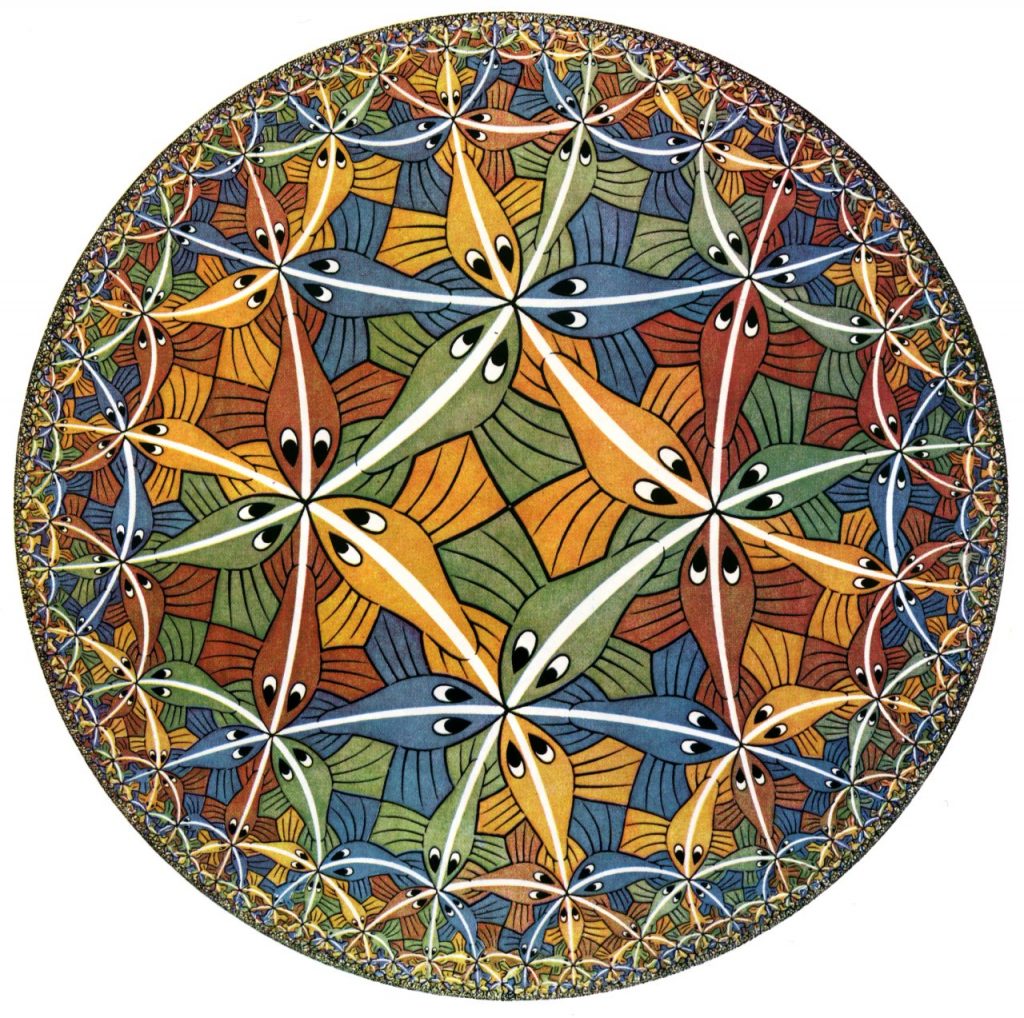The Art: Circle Limit III
The Artist: M.C. Escher
About the Work:
In 1922, a decorative artist named Maurits Cornelis Escher visited the Alhambra, a Moorish fortress in southern Spain. It was an experience that would give the world one of its most revered, and most important artists of the 20th century.
Escher found himself entranced by the palace tiles, which used a geometric arrangement called tessellation to create simple, yet appealing patterns. 14 years later, he would return to make sketches and discover more about the design process.
“It remains an extremely absorbing activity, a real mania to which I have become addicted, and from which I sometimes find it hard to tear myself away.”
The sketches laid the foundation for Escher’s work, which in the early years predominantly featured tessellations of nautral subjects such as animals and trees. He was honing his craft, but it wasn’t until he decided to discuss his ideas with mathematicians that the pieces for which he is celebrated today came into being.
These discussions taught Escher of what is known as hyperbolic, or non-euclidean, geometry – geometry that extended beyond the normalcy of human understanding of space.
Instantly, he recognised it as the future focus of his work.
“I cannot imagine what my life would be like if this problem had never occurred to me. One might say that I am head over heels in love with it, and I still don’t know why.”
There is no better example of how Escher deftly applied hyperbolic geometry than his woodcut piece, Circle Limit III. With only a few standard tools and an appreciation for the maths involved, his portrayal of the infinity of space predicted the shape of our universe long before cosmologists managed to do the same.
In recent years, modern mathematicians have confirmed that the scale of Circle Limit III‘s non-euclidean pattern, and the angle of the fish, are correct down to the millimetre. The maths that make this possible are extremely complex. And Escher calculated it all with nothing but his eyes.
Today, Escher is known better for works such as Drawing Hands and Relativity but it’s Circle Limit III that best represents the technical and creative genius he was.

